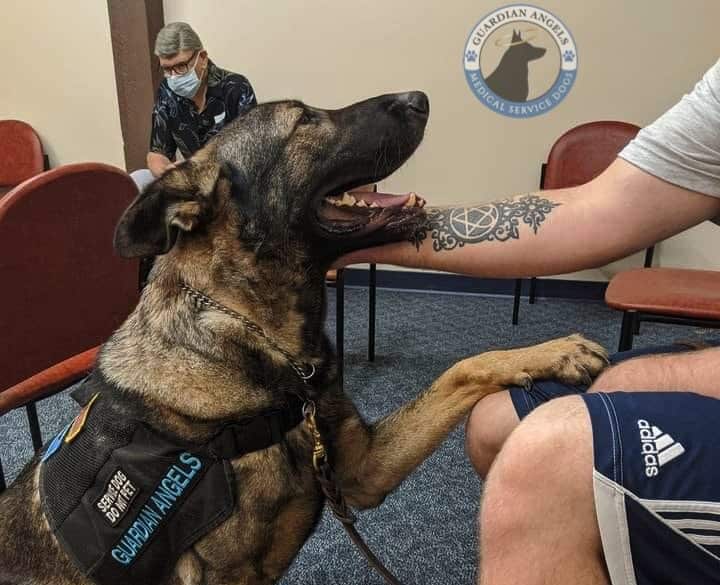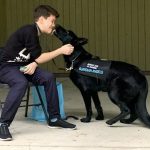The difference between the various groups of dogs out there, such as service dogs, assistance dogs, emotional support dogs, and therapy dogs can be very confusing. To help people understand the difference between service dogs and therapy dogs, Guardian Angels Medical Service Dogs has put together an informative article to help people better understand the differences.
What is a Medical Service Dog?
Service dogs, medical service dogs, and assistance dogs, which are all the names for the same thing, are the only type of dog that is protected by federal law under the Americans with Disabilities Act (ADA). Since they are federally protected, they are permitted to have public access privileges. No other type of dog, including therapy dogs, has this privilege.
Service dogs are protected by federal law because they are much like medical equipment- but with a heartbeat. They are permitted to go anywhere the public is allowed to go. This includes places such as:
- Public transit
- Grocery stores
- Movie theaters
- Malls
- Hotels
- Concert venues
- Restaurants
- And more
Because service dogs are not considered to be pets in any way, shape, or form, they do not fall under any pet regulations. For example, if a grocery store, hotel or apartment has a no pet policy, this will not apply to a service dog. A service dog is more like medical equipment and not a pet, so under the law, you can’t charge someone extra or deny someone service due to them having a cane or a wheelchair or a medical service dog.
What is a Medical Service Dog Trained to Do?
Medical service dogs are trained to perform a variety of special tasks that are used to mitigate the challenges presented by a disability for an individual. Many of the people we deal with at Guardian Angels have been self-isolated at home for years or have caregivers and are unable to enjoy major life functions independently. A medical service dog is highly trained and can help the recipient in ways that not even a caregiver can.
Some of the ways a service dog can assist their recipient include but are not limited to:
- Alerting the recipient if their sugar levels are too high or too low
- Alerting their recipient in advance if they are going to have a seizure, a nightmare, a flashback, a panic attack, etc.
Service dogs have the ability to do these amazing tasks due to their incredible sense of smell, allowing their recipient to begin to function in a more normal way. The recipient relies on their medical service dog to do these things. Additionally, we also train mobility dogs who can pick up dropped items, turn on/off lights, open/close doors, and perform an array of other activities.
At Guardian Angels, our Service Dogs are put through no less than 1,500 hours of training over a year and a half to two and a half years. This extensive training includes basic and advanced commands, desensitization, socialization, and public access training. They also learn to ignore loud sounds, horns, sirens, other dogs, etc.
What is a Therapy Dog?
Unlike service dogs, therapy dogs are considered pets. Therapy dogs are trained to provide affection and comfort to people in places such as retirement homes, nursing homes, schools, hospitals, disaster areas, and hospices. They are amazing at cheering up patients and putting smiles on the faces of staff and patients alike, and at Guardian Angels, we salute them!
Legitimate therapy dog handlers put their therapy dogs through a good deal of obedience training and socialization exercises to ensure visits to places like hospitals are friendly and positive for the patients and the dogs.
As mentioned above, therapy dogs are still considered pets, so they have no special rights under the law and are not granted any special access to public areas. In most cases, they are required to have a special Therapy Dog Certification, but this still does not provide them with any public access privileges like a medical service dog.
Have Questions About Service Dogs? We’re Happy to Help!
If you have questions about the difference between therapy dogs and service dogs, feel free to contact us today to learn more!
- How to Take Advantage of the CTU Patriot Scholarship - April 5, 2024
- Benefits of Service Dogs for Veterans - April 3, 2024
- The Art of Matching: How We Pair Service Dogs - March 19, 2024





